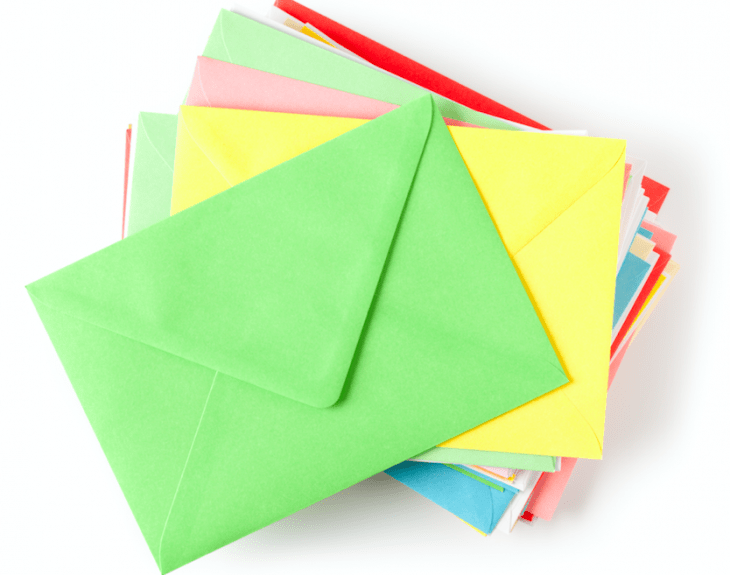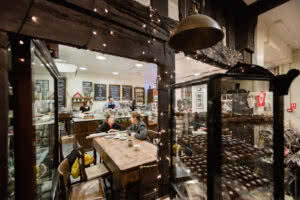Do you get excited at the sound of letters landing on your doormat? According to a report by Gallup, 41% of people look forward to the postman’s visit each day.
Despite the speed and convenience of email, we still love to receive tangible objects through the post – even if that’s direct mail. And with inboxes more crowded than ever before, reverting to this old marketing medium can increase your chances of getting read.
It’s an opportunity that event organisers are cottoning on to; Eventbrite’s 2018 Pulse Report found that 20% plan to increase their use of direct mail in 2018. Direct mail was ranked as the fourth most effective event promotion channel, above paid social media, PPC, PR and flyers.
So how are planners actually using direct mail to boost attendance at their events? We decided to find out by sourcing some real-life examples:
Cutting through the digital noise to reach the Internet Generation
Ruth SparkesRuth Sparkes, EMPRA
“Because we are a PR and marketing company for the education sector, we very often want to reach prospective students and their families. We use direct mail for open events at schools and colleges and find it works very well. With direct mail, we can really target the audience we want to reach – such as families who live in a certain postcode, along certain travel routes, or with children of a certain age.
“The results have always been good and, at this moment in time, particularly good – I think this is a combination of competitors putting all of their budgets into digital, and audiences removing themselves from digital ‘noise’. We work with many 13 to 19-year-olds and we are finding that they are pulling away from mainstream social media; they are becoming more tribal than ever and they are the least trusting group. Fake news, online bullying, and the issues with Facebook and other platforms have made them recoil from what can feel like bombardment. Also, direct mail is not so common as it once was – we all like to get something in the post (unless it’s a bill!).
“Sending out 4,000 printed invites is always going to cost more than sending out emails, or ‘reaching’ the same number by social media, but the response is higher and the engagement feels more solid. We will continue to use direct mail as part of the mix. The right mix of channels is important. It can also be used as a follow-up to an event – there’s a timely sweet spot so don’t leave it too long before you follow up!”
Landing postcards on lawyers’ desks
Jess WoolerJess Wooler, Freelance Marketing Professional
“I used direct mail for a series of events which spanned the course of a year and took place in different locations around the UK. The events were for lawyers working within the property conveyancing arena and offered free CPD points (Continuing Professional Development). The aim of the events was to offer the sales team the opportunity to meet potential new clients (as well as existing ones) face-to-face.
“I had a database of contacts that I could send an email to, however even with the right subject line, I was not confident we would always get to the intended decision maker. Lawyers are busy people who may not always see their emails (their secretaries could be filtering them) and direct mail is a concept where I knew we could end up on the desk. It’s a tangible element that could be passed to a more suitable colleague too.
“I decided to create a postcard. This was simply because within direct mail we know that each barrier we put in makes it more difficult for it to be read – i.e. by writing a letter and putting in into an envelope, we now need to persuade the end user to open it and not discard it as unsolicited mail. A postcard which was a little bigger than A5 in size was clearly noticeable in the mail and the message was available to read without having to open an envelope. The final creative was sent to a mailing house with the data, so they could print it directly onto the card and send it out.
“I think I printed about 5,000 in the first run, segmenting companies by the locations I had chosen to hold the events for the first half of the year. I then sent another 5,000 to promote the next set of events. The events contained 100 people per event and I overbooked by 5-10% based on the numbers of attendees from the first one, resulting in a near to full house for the other events. In terms of cost, second-class mail is fine (and much cheaper), unless you’re on a tight deadline, of course.
“We combined the direct mail with some other channels including telemarketing; the sales team used the postcard as an opening line to speak to contacts over the phone. Overall, through a combination of the direct mail and the events themselves, we were able to increase and update our database, find new softer ways to sell to our audience and create personal working relationships with them.”
Creating a big impression with a Facebook and direct mail combo
Peter PolgarPeter Polgar, Glenmont Consulting
“I paired strategic direct mail with Facebook ads to promote a networking event being held by my client, who is an insurance agency. We used direct mail because it is different than just digital advertising. When you pair up digital advertising with traditional marketing (like print), you can convey a message that you are bigger than you really are. This is because you can see our flyers in the mail then follow up on Facebook. It makes the event and the company feel bigger.
“It worked really well because our approach was super targeted; we focused on one town and on women. It was more expensive than other campaigns we’ve run, but the success of the event was worth it. We attracted more attendees than any other event we ever held. It got to the point where we had to turn people away. Thanks to the great turnout, we were able to make lots of new contacts and generate new business.
“We’d definitely consider doing another direct mail campaign again in future, however only if we had an identified audience. Also, we must consider our budget. We will probably reduce the size of our mailers so we can reduce the shipping cost.”
Making it personal to make an impact
Samantha JonesSamantha Jones, Inkpact
“We create personalised handwritten direct mail using a team of writers, who we call our ‘Scribe Tribe’! Companies typically come to us because they’ve already tried inviting people to past events using paperless companies or automated mailers and aren’t getting the open rate or reaction they desire. With Inkpact, our open rate is guaranteed to be 100% for all those who receive a handwritten envelope – this cannot be beaten by email.
“Sometimes our clients are already handwriting communication or event invites/thank-yous in-house and realise just how difficult it is to write more than 10 or 20. Not only do you have to use tools like light pads, quality card, and a fountain pen, you have to have beautiful handwriting and hope that your hand doesn’t get tired after the first 15 minutes of writing.
“Event types we’ve worked on are B2B conferences, creative agency events, charity evenings, launches for tech startups, and customer events for brand challengers looking to do something a little differently…we even had a rather royal meeting last year to discuss handwritten invitations at a nearby palace. Usually, the recipients are either loyal customers or people the company wants to win over in a meaningful way.
“Companies sending handwritten campaigns usually send to 100+ recipients. The conversion rates we’ve found range from 20% to 58% higher compared with emails or printed materials. We worked with one luxury retail company who sent handwritten notes to customers after they had made a purchase. This led to 58% more second purchases (compared with a control group who did not receive notes), while average order value increased by 31%.
“When you compare the price of a handwritten campaign with things like paperless invites and automated mail it can seem more costly, but what people are starting to take into account is that they are guaranteed a 100% open rate by everyone who receives a handwritten envelope. And with such high ROI rates, it’s a no-brainer! Plus it helps keep brands top of mind for longer as it’s almost impossible to throw away a beautifully handwritten note. On the other hand, an email is easily lost to junk folders, promotion folders, the delete button, or pure ignorance due to mass emails in the inbox.”
Conclusion
If you have a clearly defined target audience, using direct mail to reach those individuals at home or in their offices can be extremely effective. Send them a personal, handwritten invitation and you’re bound to get their attention or combine your direct mail with targeted Facebook ads so your message follows them from phone to home.




